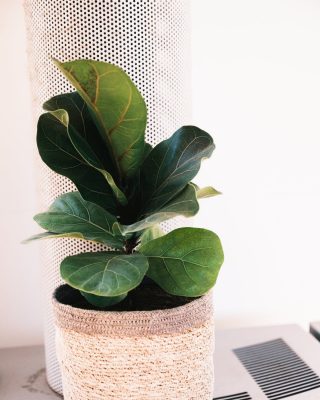Plant Care
Fiddle Leaf Fig Care
These graceful indoor trees are members of the Ficus family and require minimal care, making them a great choice for new plant parents.
Light – Bright, indirect light. They can tolerate direct sunlight, but the possibility for leaf scorch still exists. If you notice leaf scorch, move your Fiddle Leaf a couple feet away from the window to protect it.
Water – Thoroughly saturate the soil once the top 2 to 3 inches of soil are dry. Be careful not to water too often as their large leaves can develop large brown spots and continued overwatering will result in root rot.
Soil – Well-draining soil. If your soil is retaining too much water, add perlite or reduce watering.
Temperature – Temperatures between 65° and 80° are ideal and Fiddle Leafs should not be exposed to temperatures below 55°.
Humidity – Average home humidity is perfect for Fiddle Leafs, but you may want to mist them in winter when homes tend to become drier.
Fertilization – Fertilize once a month during spring and summer with a fertilizer, such as Bonide Liquid Plant Food, diluted to 1/8 strength.
Size – Fiddle Leafs can reach about 10 feet tall at maturity. Bambino, a dwarf variety, averages 2 to 3 feet, making them a perfect choice for people with smaller spaces.
Repotting – These plants actually enjoy spending time pot bound so there’s no rush to repot them. On average, Fiddle Leafs should be repotted every 2 to 3 years, though more mature plants can go longer. Refresh the top layer of potting soil yearly to replenish nutrients.
Propagation – Fiddle Leafs can be propagated via cuttings as long as those cutting include a full leaf and several inches of stem.
Toxicity – Moderately toxic to people and pets if ingested.



